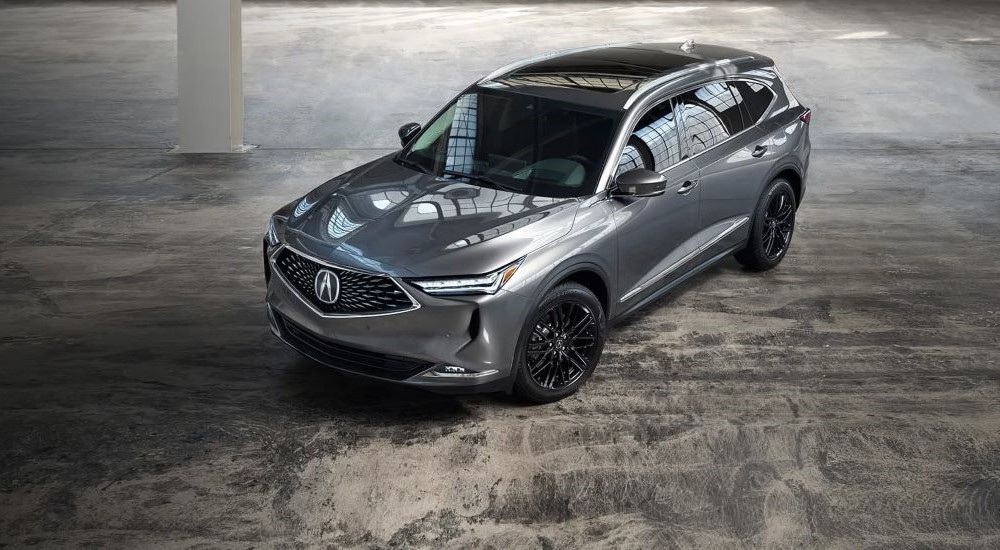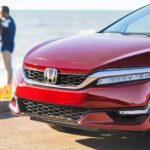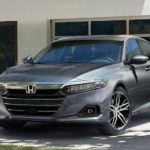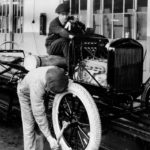Are you looking for a luxury ride? Thanks to recent market fluctuations, you will likely find a great one at a used car dealer. Thanks to a disrupted supply chain that affected the automotive industry in 2021 and 2022, used cars are in hot demand. You can find any style of car you want on the used market, and, yes, that most certainly includes luxury ones. Luxury Acuras are one example, but they might be the best example as they are fuel efficient and now come in hybrid form, an increasingly desirable trait. Acura is a relatively new manufacturer compared to the other big names like Ford, Chevy, and Toyota, but it made a massive impact quickly. How so? Let’s look at its origins and evolution to see how it produced some of the best sedans around.
Picture the automotive landscape of the 1970s: high gas prices were in, and large cars were out. With gas crisis after gas crisis, consumers could not drive cars that guzzled fuel. Their wallets would take far too much damage. That led to Japanese car manufacturer Honda winning over many buyers. The Honda Civic, a very fuel-efficient sedan, became an in-demand vehicle, especially for younger drivers with little wiggle room regarding financial strain.
As with so many economic extremes, it seemed like high gas prices would last forever. They did not. In the 1980s, prices fell after a recession and did not rise to the levels seen during the 1970s. This meant consumers could once more start eyeing larger, more muscular vehicles and luxury cars. The Honda Civic and the Honda Accord still proved popular, and the manufacturer continued to do well. However, it became clear that Honda did not have a luxury vehicle to offer buyers, which left them out of a significant slice of the automotive market. Since its name had become so linked to affordable, fuel-efficient cars, Honda also worried that if it did produce a luxury car, no one would take it seriously.
Enter Acura.
Evolving Out of Honda
Honda made an intriguing and risky move: it created a new brand name for its upcoming luxury vehicles. Why risky? Because the lack of a familiar name could keep buyers away, uncertain about a brand they were unfamiliar with. Why intriguing? Because if it paid off, the luxury car market would transform.
Almost 40 years later, it is clear the latter happened.
The Integra and the Legend first rolled out in the late 1980s, introducing the world to the Acura brand and a new level of luxury travel. Sales exceeded expectations in the first year and doubled in the second. Clearly, drivers were eager for new luxury options.
Soon, the NSX joined the lineup, following the already sporty nature of the Integra. As a flashy two-seat sedan, the NSX revolutionized the image of a sports car in the 1990s. Its build had a lot to brag about, offering a new way of constructing sports cars. It came with an aluminum monocoque body and the first-ever engine with connecting titanium rods. The automotive press went wild for it. So did drivers. The NSX, and the other Acura sports cars that followed, could also be seen at the track, participating in races around the world. It won quite a few.
Acura also had a unique production model as it produced much of its inventory in the United States. When an economic crisis slammed Japan in the late 1980s and early 1990s, Acura kept its head above water thanks to its dual continent setup. While other Japanese manufacturers panicked, Acura managed to keep on evolving. By the end of the 1990s, this paid off with a new vehicle, a luxury SUV that sounded almost oxymoronic at the time.
New Millenium, New Acura
In 2001, Acura launched the MDX, a three-row luxury SUV with a snazzy name that went with a cool exterior. While plenty of SUVs are stylish now, they were not known for their exteriors at the time, which meant Acura could create a new market: luxury SUVs for people who needed more space but disliked the usual SUV build. Did it pay off? Did people find it stylish? In 2001, Acura hit a record sales number, so the results speak for themselves.
The 2000s proved to be an exciting time for the car manufacturer. Their sports cars continued to compete in races, and the manufacturer won awards for how safe their vehicles were. They now had plenty of models on offer, a far cry from 1986 when they had but two.
By this point, Acura had created a new definition of luxury. Not only were the cars beautiful, but what was under the hood was ahead of its time. Instead of luxury representing comfort and style, it now also represented advancement. Each year, Acura happily puts out a vehicle with new technology, such as 2013’s 310 horsepower direct-injected V6 engine. Unsurprisingly, older Acuras still prove to be popular on the used car market; the cars always came out with technology far ahead of their time.
With SUVs and luxury sedans, Acura has something for everybody. But under the surface, a wave of change brewed, affecting the entire automotive market: hybrid and electric vehicles were about to become more in demand than ever.
Keeping It Environmentally Friendly
Combining government investment in hybrid engines and electric vehicles plus changing consumer demands, hybrid, and electric cars grew in popularity throughout the 2010s. Now, manufacturers fully expect to see hybrids and EVs making up a significant share of the marketplace by 2030, with some saying that even more than 50% of sales will be for EVs.
Acura has noticed. That is not a surprise. Since Acura came out of Honda, a manufacturer known for outstanding fuel efficiency, Acura has always kept an eye on mileage and clean driving. In fact, Acuras have long been heralded for impressive mile-per-gallon ratings, especially when you consider that some of their output is sports cars.
By 2013, Acura had already debuted an impressive sedan with a hybrid option: the Acura RLX Sport Hybrid. Once more, Acura traveled fresh ground. There had been hybrids in the past, but by debuting a sport hybrid, Acura made the bet that even fast and flashy cars could operate well with a hybrid engine. This powerful engine could crank the horsepower up to 377, making it clear that going hybrid did not mean sacrificing speed and acceleration.
One of the biggest obstacles to an electric revolution in the past has been the sense that hybrids and EVs won’t get as much power as gas vehicles. By debuting such a powerful sports car, Acura let people know this would not be the case going forwards. There is a solid argument that when the RLX Sport Hybrid was shown to consumers in 2013, it forever changed the landscape for hybrid and electric vehicles, bringing us to where we are today, a world where charging stations will soon be as popular as gas stations.
The Current State of Acura
Acura’s future looks as bright as ever. It recently unveiled its Precision EV Concept, a beautiful vehicle that looks unlike anything else on the market. Acura stays innovative and way ahead of other luxury rides.
That is why the manufacturer has stayed in such great shape. It is also why the Acura is such a bright spot in the used car market. Even buying one ten years old means you are getting a ride that can compete with other manufacturers’ new vehicles.
It will be interesting to see where Acura is at the end of this decade as the automotive industry enters one of its most exciting times in recent memory. We are sure it will be way ahead of the curve.




